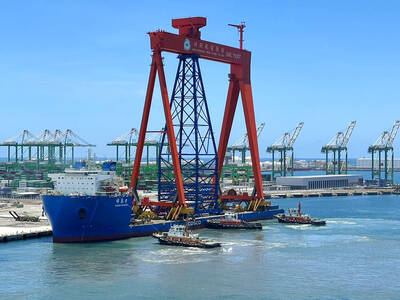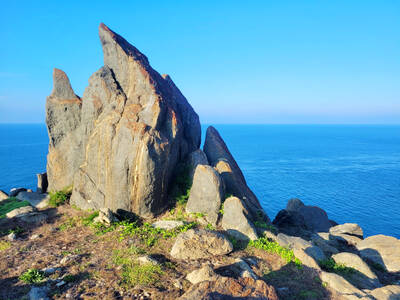Locked away in deep freeze in the Philippines, the farm heritage of Iraq and Afghanistan awaits the arrival of a political spring in the bruised nations so that rice fields will once again carpet the battlefields.
Holding the seeds of more than 108,000 varieties of the key grain is a squat, quake-proof laboratory at the International Rice Research Institute (IRRI) complex south of Manila, their last refuge from war, floods, drought and pestilence.
Priceless native crop varieties are among the unmourned casualties every time human conflict or natural disasters ravage the Earth, says Ruaraidh Sackville Hamilton, a British evolutionary biologist and custodian of the institute's gene bank set up in 1977.
Iraq, at the heart of the so-called "Fertile Crescent" where rice has been grown for at least two millennia, would be no different, he adds.
"After the end of a war you will find none of the varieties of any kind still in use and that includes the modern high-yielding varieties and traditional varieties," Sackville Hamilton says during a tour of the facility.
The seeds, gathered by the institute's scientists throughout the world or sent in by cooperative governments, are held in trust for humanity inside floor-to-ceiling trays of foil packets at the climate-controlled facility.
Some seeds are stored at temperatures of minus 19 degrees Celsius, designed to make them last for 100 years, while the active collection, used for global exchange to breeders as well as government entities that seek them, are kept at -2 degrees Celsius.
Duplicate packets are stored in a similar facility inside the Fort Collins military base in the US.
"Whenever there's a civil conflict -- Iraq, Afghanistan, Rwanda, Cambodia, East Timor -- the rural population is displaced and they don't go through their annual cropping cycles," institute spokesman Duncan Macintosh says.
"Farmers have to keep seeds year after year to grow the crops. If they're off fighting wars, they don't get to do that," he adds.
The `Green Revolution'
After the institute helped spark the "Green Revolution" that boosted yields in the 1970s, its gene bank came to Cambodia's rescue in 1988, a decade after the bloody 1970s rule of the Khmer Rouge that practically wiped out the agricultural nation's rice varieties.
"After their civil war we were able to restore to them all the major varieties of rice that originally came from Cambodia that we conserved in this gene bank," Sackville Hamilton said.
Sister agencies from the World Bank-funded Consultative Group on International Agricultural Research also helped rebuild agriculture, among others, in Rwanda after the genocide, Angola after the civil war, Peru after the 1997 El Nino drought, and Honduras and Nicaragua after a deadly 1998 hurricane.
"We can do the same for Iraq and Afghanistan as soon as the mechanism to get these varieties back into those countries [are in place]. We have some [rice varieties] safely conserved here. We can send them back," Sackville Hamilton said.
Macintosh says that with the post-war security situation still unsettled in Iraq, the US, Australia, and the Aleppo, Syria-based International Center for Agricultural Research in the Dry Areas (ICARDA) are focusing their efforts on rebuilding Iraq's gene banks for wheat, barley, and other crops.
"We have been making plans with ICARDA to do the same with rice. We began that last year and we haven't got to sending anything back yet, but as soon as we get these plans we can send them," Sackville Hamilton said.
While wheat is the primary cereal in Iraq, rice is also grown in some areas while Afghans are big rice eaters, he added.
But he says sending the rice seeds back "depends on a combination of getting the appropriate infrastructure there to make it worth doing."
"Until they get something to keep it there, there's no point in getting it there. We can get it there at any time. We'll wait for a way of doing it so that we have an impact," Macintosh adds.
Dealing with tsunamis
The gene bank also proved invaluable following the deadly Indian Ocean tsunamis that struck rice-growing areas in Asia in December last year. The giant waves dumped salt water on paddies up to several kilometers inland.
One of the first things Malaysia, Sri Lanka and India did was to contact the institute as "they needed to find rice varieties that would tolerate salty conditions," Macintosh says.
The three countries later learned that they actually have some varieties back home that grew well in salty areas, and the institute ended up sending advice instead of seeds.
Rice grows in a variety of areas, and each type has its own unique way of adapting to drought, floods, and disease as well as resistance to cold, heat, acid soils, salt soils and other conditions, Macintosh says.
"So for example a country would have a problem with drought and we would send drought-tolerant varieties to them," he says.
Sackville Hamilton said the gene bank has gained added significance after the rice genome was decoded and as biotechnology companies race to patent newly developed varieties of rice, the staple food of nearly half of humanity including many of the world's poorest.
He cited a case when India, a key contributor to the rice gene bank, requested a variety that was native to China, which is protective of its indigenous varieties. The UN's Food and Agriculture Organization resolved the issue for the two countries and institute.
India obtained the sought variety from the institute free of charge after the government signed a document that prevented New Delhi from taking a patent to it.
India could then grow it commercially or use it for its own breeding programs to produce higher-yielding varieties, Sackville Hamilton says.

On the evening of June 1, Control Yuan Secretary-General Lee Chun-yi (李俊俋) apologized and resigned in disgrace. His crime was instructing his driver to use a Control Yuan vehicle to transport his dog to a pet grooming salon. The Control Yuan is the government branch that investigates, audits and impeaches government officials for, among other things, misuse of government funds, so his misuse of a government vehicle was highly inappropriate. If this story were told to anyone living in the golden era of swaggering gangsters, flashy nouveau riche businessmen, and corrupt “black gold” politics of the 1980s and 1990s, they would have laughed.

This is a deeply unsettling period in Taiwan. Uncertainties are everywhere while everyone waits for a small army of other shoes to drop on nearly every front. During challenging times, interesting political changes can happen, yet all three major political parties are beset with scandals, strife and self-inflicted wounds. As the ruling party, the Democratic Progressive Party (DPP) is held accountable for not only the challenges to the party, but also the nation. Taiwan is geopolitically and economically under threat. Domestically, the administration is under siege by the opposition-controlled legislature and growing discontent with what opponents characterize as arrogant, autocratic

When Lisa, 20, laces into her ultra-high heels for her shift at a strip club in Ukraine’s Kharkiv, she knows that aside from dancing, she will have to comfort traumatized soldiers. Since Russia’s 2022 invasion, exhausted troops are the main clientele of the Flash Dancers club in the center of the northeastern city, just 20 kilometers from Russian forces. For some customers, it provides an “escape” from the war, said Valerya Zavatska — a 25-year-old law graduate who runs the club with her mother, an ex-dancer. But many are not there just for the show. They “want to talk about what hurts,” she

It was just before 6am on a sunny November morning and I could hardly contain my excitement as I arrived at the wharf where I would catch the boat to one of Penghu’s most difficult-to-access islands, a trip that had been on my list for nearly a decade. Little did I know, my dream would soon be crushed. Unsure about which boat was heading to Huayu (花嶼), I found someone who appeared to be a local and asked if this was the right place to wait. “Oh, the boat to Huayu’s been canceled today,” she told me. I couldn’t believe my ears. Surely,